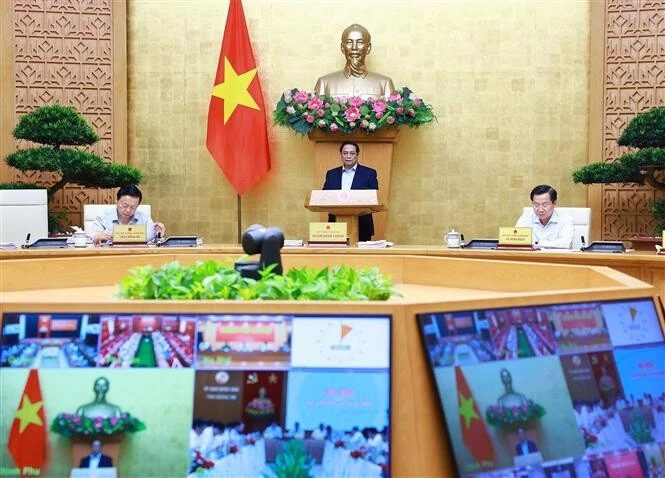
Vietnam's economy has shown strong growth in the first half of this year, surpassing expectations, with GDP growth projected to be 0.2-0.3 percentage points higher than initial forecasts. Minister of the Government Office, Tran Van Son, announced this at a regular press conference on Thursday, stating that Q2 GDP growth is estimated at 7.67%, leading to an H1 GDP growth of 7.31%.
This robust performance is attributed to improved monthly indicators for production and budget revenue, a stable macroeconomic environment, and a controlled inflation rate. Exports in the first half of the year saw a solid increase of 14.4%, with a trade surplus estimated at $7.63 billion. Additionally, total retail sales of goods and consumer services rose by 9.3%.
Key Economic Indicators Driving Growth
The main indicators that have fueled Vietnam's economic growth are as follows:
Manufacturing and Processing Industry: Grew by 10% in the first half, proving its role as a key economic driver. This demonstrates Vietnam's important position in the global supply chain.
Exports and Trade Surplus: A 14.4% surge in exports and a trade surplus of $7.63 billion signify enhanced competitiveness of Vietnamese products in global markets. Vietnam shows particular strength in exporting various items, including electronics, textiles, and footwear.
Total Social Investment: A 9.8% increase in total social investment indicates active domestic and foreign investment. This leads to infrastructure expansion and increased industrial production capacity, laying the groundwork for long-term growth.
Foreign Direct Investment (FDI): Registered FDI reached $21.5 billion, a 32.6% increase year-on-year, marking the highest since 2009. Disbursed FDI exceeded $11.7 billion, up 8.1%. This shows that Vietnam is perceived as an attractive investment destination for foreign investors due to its stable investment environment and growth potential. FDI attraction is particularly active in manufacturing, high-tech industries, and renewable energy.
Business Activity: In the first half of this year, 152,700 businesses either newly entered or re-entered the market, which is 20% more than the number of businesses that exited. This dynamism in business activity reflects the vitality of Vietnam's economy and its entrepreneurial spirit. The growth of small and medium-sized enterprises (SMEs) is particularly notable, contributing to job creation.
Government Efforts and Future Tasks
Minister Tran Van Son outlined key government policy directions, including maintaining macroeconomic stability, pushing for public investment capital disbursement, promoting new growth drivers, and leveraging the 17 free trade agreements (FTAs) while pursuing new trade agreements.
The government plans to focus on the following tasks in the remainder of the second half of the year:
Monitoring Local Government Models: Closely monitor the operation of the second-phase local government model and implement regulations on decentralization and power distribution, providing timely guidance and resolving regional bottlenecks to ensure smooth administrative procedures.
Maintaining Macroeconomic Stability: The State Bank of Vietnam is requested to operate reasonable monetary policy tools, interest rates, and exchange rates to support production and business activities and meet the capital demands of the economy. This focuses on controlling inflation and ensuring financial market stability.
Accelerating Infrastructure Construction: A concerted effort must be made to complete at least 3,000 km of expressways and over 1,000 km of coastal roads this year. This will enhance logistics efficiency and promote balanced regional development, contributing to economic growth. The government also plans to increase investment in key infrastructure projects, including major airports and seaports.
Reforming Administrative Procedures: All ministries, sectors, and local authorities must strive to resolve long-standing issues, prevent waste, and effectively reform administrative procedures. This is essential for improving the business environment and further stimulating investment attraction. The government specifically plans to enhance the efficiency of administrative services through digital transformation.
Outlook for Vietnam's Economy
Vietnam is projected to continue its robust growth trajectory, backed by a stable political environment, a young and dynamic workforce, and the government's proactive economic reform efforts. Amidst global supply chain restructuring, Vietnam is emerging as an attractive production base, diversifying its export markets through various FTA signings. However, challenges such as global economic uncertainties, rising trade protectionism, and climate change risks remain for Vietnam to overcome. The government is expected to successfully manage these challenges and continue its efforts for sustainable economic growth.
[Copyright (c) Global Economic Times. All Rights Reserved.]






























